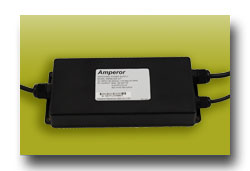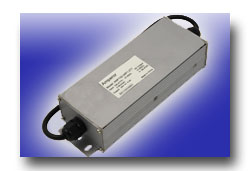Constant Current LED Driver / Power Supply
Why use a Constant Current LED Driver
 Before getting into the details of the Constant current LED driver, let's first do a quick run through with the more commonly implemented and accepted power source – constant voltage type. It can be found in computers, cell phones and many other devices we use every day. As the name suggests, it means to supply a regulated voltage to the application it is connected to. Sometimes, the power supply can be built with multiple channels delivering different voltage outputs, but each channel tends to hold its pre-defined output voltage level well, even in different load conditions. Thus, the whole power supply can still be treated as a constant voltage source. Before getting into the details of the Constant current LED driver, let's first do a quick run through with the more commonly implemented and accepted power source – constant voltage type. It can be found in computers, cell phones and many other devices we use every day. As the name suggests, it means to supply a regulated voltage to the application it is connected to. Sometimes, the power supply can be built with multiple channels delivering different voltage outputs, but each channel tends to hold its pre-defined output voltage level well, even in different load conditions. Thus, the whole power supply can still be treated as a constant voltage source.
Electrical engineers are usually more familiar with the constant voltage power supply because it is the basic concept learned in engineering school. Additionally, they may have been using it for years, from project to project. However, when it comes to powering LED signage or LED lighting applications, switching to the constant current LED driver is a method they cannot avoid. Due to the physics characteristics of the LED itself, the constant current source is the preferred method to drive LEDs. By using the constant current LED driver, engineers can achieve:
- Better brightness consistency control among different LEDs in the same signage or lighting application.
- Longer life expectancy on the LEDs.
- Higher system power efficiency rating – hence easier qualification for state's or power utility companies' rebates, tax breaks, etc…
You can find a detailed explanation on the benefits of a constant current driver at this article: Constant current vs. constant voltage topology. The article also points out an exemption - some LED modules in use are equipped with an on-board constant current source. In this case, the constant voltage LED driver is the preferred power source for the system.
Quick Constant Current LED Power Supply Selection Guide
 Below are points to keep in mind when selecting a constant current LED Power Supply: Below are points to keep in mind when selecting a constant current LED Power Supply:
- What is the expected input voltage range to the driver – 120Vac for the US domestic use only, 100 ~ 264Vac for the worldwide usage or 277Vac option for installing in a commercial building?
- Output current level – what is the preferred forward current specification from the LED manufacturer? The three standard current options are 350mA, 700mA and 1000mA. However, depending on the LEDs in use, the constant current LED driver might need to output in a different current level to the system.
- Output voltage swing-range – Since the output current needs to stay constant, the power supply varies the output voltage to deliver different power level. The high side of the voltage swing range indicates the maximum output power the constant current LED power supply can generate. This also determines how many LEDs you can connect to one power supply.
- Power efficiency – the constant current LED driver tends to utilize mature technology and usually has a higher power efficiency number (90%), compared to the constant voltage source number (85%).
- Dimming control – Generally speaking, the constant current LED driver is used more in LED lighting application. As a result, the dimming function is usually needed to be built-in to the power supply. Listed below are dimming control interfaces on the market. You’ll need to pick one for your system.
- wired in signal: DC voltage or PWM signal.
- wireless signal: wifi or IR.
- Digital addressable: DMX or DALI Bus.
- Environment factors – operation temperature, wet location or not, etc…
- Regulations – UL8750 governs the LED lighting system. UL879 is the one for LED signage system. If the application is to be used in the US, you need to use a UL recognized component based on either UL8750 or UL879 standard.
Please call 281-807-3320 or EMAIL for more information on selecting your constant current LED driver. You can find Amperor’s offering at the product listing page.
|